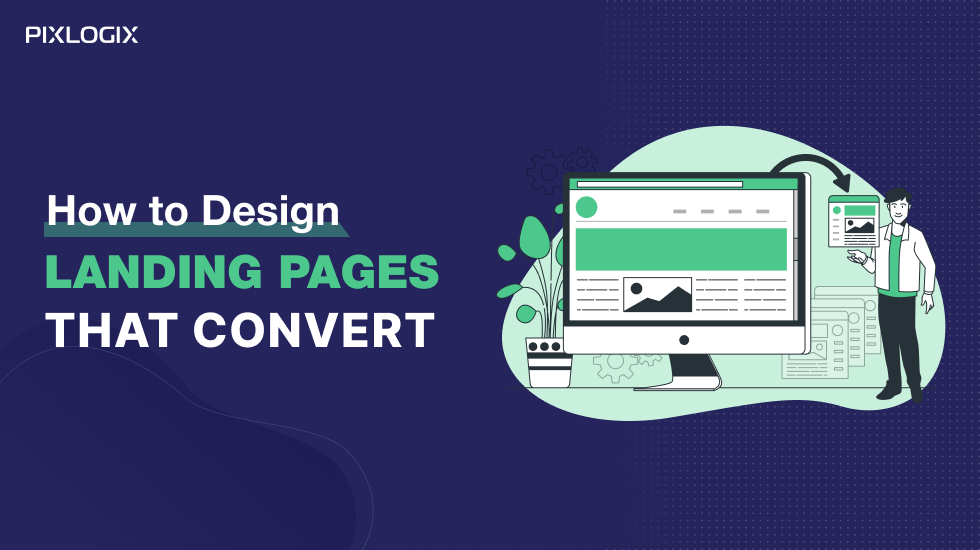An Ultimate Checklist for WEBSITE UI/UX: Maximizing User Engagement

- Last Updated On September 18, 2024
- 11 min read
What are the essential elements to improve your website’s UI/UX design? If you don’t know, this blog is the best guide to a checklist for website UI/UX design for your website.
As you know, User interface and user experience are vital for designing websites or mobile apps these days. You can take your website UI/UX to the next level if you consider some small but essential design elements in your website design.
Let’s get in-depth about User Interface and User Experience. Then we will get to know an outstanding checklist for website UI/UX design of the website.
What is the User Interface or UI?
A user interface (UI) is a series of screens, pages, and visual elements, such as buttons and icons, that users can use to interact with a device. These are the elements, graphics, and effects used in the design.
What is User experience or UX?
User experience is the internal experience a person has when browsing a website. It is not limited to the website’s visual appearance but is highly dependent on the usability, accessibility, simplicity, and value that UX provides users.
Web UI and UX are generally talked about together because both of these elements are equally important to excellent web design and can be achieved by helping each other.
We hope you understand the User Experience and User Interface. But if you still have doubts about improving conversions with UI/UX design, contact the best Web Design Company in India. They will guide you in detail about the importance of UI/UX design for your website. Now let’s see the complete checklist for website UI/UX.
A Comprehensive Checklist for Website UX/UI
Before submitting your proposal, make sure you check all the boxes in the list. You might miss some aspects of the design that can affect the UI/UX of the website.
The omission of small details is quite evident to any designer. We have created a website UI/UX design checklist for website UI/UX to help you create user-friendly designs. We have divided the checklist into 6 following sections.
- Homepage design
- Website Layout
- Site navigation
- Website Accessibility
- Content
- Contact forms
So, let’s know about each section one by one.
Home Page Design Checklist
The home page of a website is the first and most important page that users notice. Just as newspapers display essential news on the front page, it is crucial to display the most important content on the home page of a website.
Here are significant checklists for website UI/UX design to help you design a creative and effective website homepage.
- The design encourages users to explore the site further.
- It shows all critical services and products
- The design is easy to understand, and the action URL is short and easy to remember
- Relevant and high-quality images and videos are used
- Have links to all subpages
- Have a precise location and contact information
- All major changes and updates are easy to spot on the home page
- They have a clear call to action
- Have a link to the privacy policy and terms of service page
- The page loads quickly on all devices
- Use high-quality and unique images
- The home page should represent your company’s culture
- There’s a navigation bar with clear links to key pages and categories
- Links to social networks are clearly displayed
- The home page should create a positive first impression that’s appropriate for your business
- The purpose of the site is immediately clear
- Always use Images and videos that are relevant and meaningful
Site Layout Checklist
The layout is the foundation of every website. Knowing user perception and user interest will help you design a layout that the user wants to see.
Once you know the users’ interest, you can follow the following checklist for website UI/UX to make sure you design the perfect layout for your target audience.
- This is a responsive website design
- Important content is displayed first
- All information is displayed correctly
- It is less distracting with fewer pop-ups
- Consistency in design and information
- Have multiple login options
- Have links to relevant pages
- The design, layout, and organization of the site is
- consistent and appropriate for your brand
- Related information is clearly grouped together
- Pages aren’t cluttered and have enough white space to make them clear and easily readable
- The layout of website should focuses on users’ attention on what they have to do next
- It’s clear which elements are ‘clickable.’
- There is an obvious ‘visual starting point’ on each page
- Fonts are used consistently across all pages
- Pages don’t have headings that look like the end of the page in the middle of the content.
- Your logo is in the same place on every page
- Attention grabbing features, such as animations, are used sparingly and only if relevant
- The site is easy to use on different devices and browsers without horizontal scrolling
Site Navigation Checklist
Web navigation is how users move from one page to another. It should be easy to understand and focused on the goal of the website.
The checklist for website UI/UX design below will help you create a nice and strategic navigation system for your website.
- Navigation is consistent and appropriate on every page
- The main navigation is easy to identify and understand
- The Logo of the company is linked to the homepage
- It’s easy for users to identify where they are on the site.
- They have an optimized URL structure
- All important links are easily recognizable. There is no alphabetical order of links
- All links are descriptive and functional
- There are clear navigation labels
- The web search works properly
- The main keywords in the content are linked to the respective pages
- The entire navigation path is focused on the final destination of the website
- Have a clear call to action on every page
- Have a meaningful and useful 404 page
- Navigation is clear and consistent on every page
- There are clear links to the main pages and categories on every page
- Navigation tabs are located at the top of the page
- Content is organized into categories logically
- Category labels accurately and clearly describe what’s in the category
- If the site has a lot of products, users can sort and filter category pages
- Navigation labels contain ‘trigger words’ that users look for when they scan the site
- There is an obvious change when the user hovers the mouse over something ‘clickable elements.
- If it’s an ecommerce site, there are clear links to the basket and checkout on each page
- There is a sitemap providing a clear overview of the site’s content
- There is a link to the sitemap on every page
- It’s clear to users where they are on the site – for example, using breadcrumbs
Website Accessibility Checklist
The website must be accessible to both users and search engines. Make sure your website is accessible from all devices and browsers.
You must also use all the HTML attributes correctly to make the website search engine friendly. Here is a quick checklist for website UI/UX to improve the accessibility of your website.
- You have a responsive website design
- Attractive and appropriate colors are used
- Content is readable for every visitor
- Properly used font style, size, and spacing with respect to mobile devices
- User-friendly navigation
- Have unique meta tags (Meta title, Meta keywords, Meta description, etc.) for each page
- Cleverly used Header tags targeting specific keywords
- Progress indicator for multi-step workflows
- All user interface elements are authentic and accessible
- Users can easily recover from errors
- Every image on the site has unique image alt tags
- Every web page is accessible to search engine crawlers
- Site loading time is reasonable
- Alt attributes are provided for non-text elements, such as images, videos, etc.
- Captions and transcriptions are provided for videos
- The site can be navigated with the keyboard
- The most straightforward language appropriate for the audience is used
- The page content is readable without a style sheet
- Pages are checked against accessibility standards, e.g., using Web Accessibility Checker
Website Content Checklist
Content is the most crucial aspect of any website from a user and search engine perspective. The search engine is always looking for new and unique content, and users want content that offers real value to their queries.
Here’s a checklist for website UI/UX to help you optimize your content for a better user experience
- The content is unique and not copied from anywhere else on the site. It offers real value for user queries
- Content is easy to understand and visually appealing
- Add a brand favicon
- Easy to read
- Written in a common language
- Have the correct title, heading, and paragraph structure
- Relevant high-resolution graphics used
- The content is grammatically correct
- Proper linking within the content
- Critical content is above the edge
- Ads and pop-ups are unobtrusive
- Headings are clear and descriptive
- Copyright date indicates the current year
- Company contact information is accurate throughout the site
- General content has been properly removed and replaced
- Make sure you are using the right brand tone in your content.
- Keep in mind the user persona for your business content.
- Sub-headings are short, clear, and descriptive
- Always keep your content up to date
Contact Forms Design Checklist
Forms are the most important element of any website. A well-designed form can help you increase online conversion.
Here’s the checklist for website UI/UX design so you can design a form that users love to fill out:-
- The form is simple and understandable.
- It should include the necessary details.
- Fields are labeled with regular terms
- Highlighted required fields
- There is no long drop down menu
- Have correct error messages
- Avoid any distractions
- Give tips on how to fill out the form correctly
- Have a send confirmation message
- Have fewer fields than required
- Forms allow users to input information instead of having long drop-down menus
- Only necessary questions are asked
- Forms allow users to input data instead of having long drop-down menus
- Fields are labeled with conventional terms, e.g., Name, Address, etc.
- Successful form submission is confirmed with a confirmation page
- Error messages are displayed next to the input field where the error occurred
- Users don’t need to enter special characters like $ or % – the form can remove this automatically from the field.
- Fields contain hints or examples to make the expected input clearly.
- Text boxes provide plenty of space for the answer
- Entry fields clearly indicate the format required for information, such as dates, e.g., DD/MM/YY.
Wrap Up
This is your well-defined checklist if you want to get creative with your next website design. You can get help from a top web design agency like Pixlogix Infotech Pvt. Ltd. it is India’s leading Web design and development company who offer you complete business solutions like Web design services, website development, ecommerce development, graphics and online marketing.
If you want to hire a web designer then you should get a call from this company. Because they have a whole team of highly skilled web designers and developers who can offer highly professional services to their clients. For more details visit the site now.
Ashish Tiwari
Ashish Tiwari is an SEO manager at Pixlogix Infotech Pvt. Ltd. bringing 8+ years of expertise in driving organic traffic and creating data-driven marketing strategies. With a deep understanding of business, marketing, and promotional tactics, he specializes in technical SEO, content optimization, and paid advertising. Ashish has helped businesses across e-commerce, SaaS, healthcare, and other industries achieve measurable growth. Known for his dedication and growth mindset, he has consistently delivered impactful results and achieved significant milestones in record time.
Related Post
Get in Touch Now!
Have a word with our expert consultants about your next project to get suggestive guidance & proposal.
Sales Inquiry
Chat with us about your project for a custom solution and quote.




